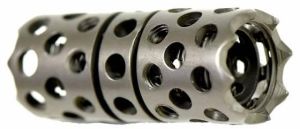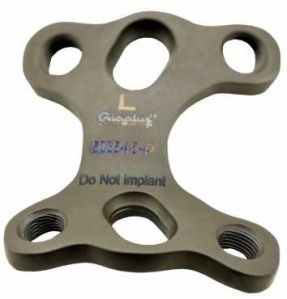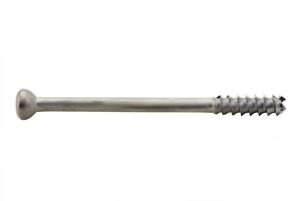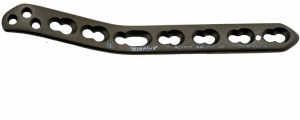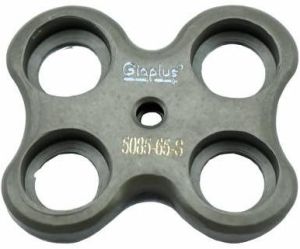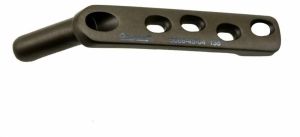- Mohali, Punjab
- GST NO. : 03AAGCG3925P1ZD
- View Mobile Number
| Business Type | Manufacturer, Exporter, Supplier |
| Titanium Gr-v | 5045-45-02 to 5045-45-18 |
| STAINLESS STEEL 316L | 3045-45-02 TO 3045-45-18 |
| Dia/width | 6 X 19mm |
| Click to view more | |
Preferred Buyer From
| Location | Worldwide |
Product Details
Size
2 Hole to 18
Main Category
Trauma Plating
Catalogue Wise
Small Fragment
A DHS LCP, or Dynamic Hip Screw with a Locking Compression Plate, is an orthopedic implant commonly used in the surgical management of hip fractures, particularly those involving the proximal femur (the upper part of the thigh bone). This implant combines the features of a dynamic hip screw (DHS) with a locking compression plate (LCP) to provide stability and support during the healing process. Here are the specifications and common uses of a DHS LCP:
Specifications:
- Design: The DHS LCP consists of two main components: a dynamic hip screw and a locking compression plate. The dynamic hip screw is designed to provide compression across the fracture site, while the locking compression plate contains holes for screws. The plate is typically contoured to match the shape of the proximal femur.
- Material: Like many orthopedic implants, the DHS LCP is typically made from biocompatible materials, such as stainless steel or titanium.
- Dynamic Hip Screw (DHS): The DHS component includes a screw, which is inserted into the femoral head, and a barrel or side plate, which allows sliding of the screw to provide compression as needed for fracture stability.
- Locking Compression Plate (LCP): The LCP component features holes for locking screws. These screws lock into the plate to provide angular stability. The LCP is designed to hold the fracture fragments in the correct position.
Common Uses:
- Hip Fractures: The primary and most common use of a DHS LCP is in the treatment of hip fractures, specifically those involving the femoral neck or the intertrochanteric region of the proximal femur. Hip fractures are common, particularly among the elderly, and surgical intervention is often required for proper healing.
- Stabilization: The dynamic hip screw (DHS) component is used to provide compression across the fracture site, which helps stabilize the fracture fragments and promote bone healing.
- Angular Stability: The locking compression plate (LCP) provides angular stability to the fracture, reducing the risk of implant failure and ensuring that the bone heals in the correct anatomical alignment.
- Versatility: DHS LCPs come in various lengths and screw hole configurations to accommodate different fracture patterns and patient anatomy.
Looking for "4.5mm DHS LCP" ?
Piece



